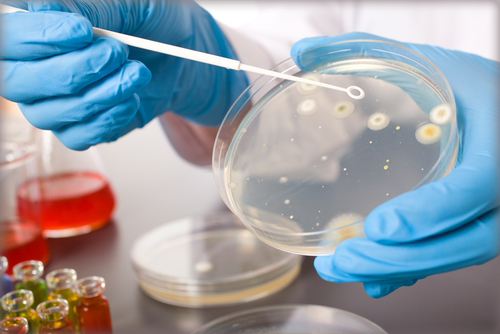What is the difference between bioburden and microbial limit test?
The evolution of the pharmaceutical microbiology field due to technological advancement has brought a lot of changes. It is the reason behind the continuous learning process among many microbiologists.
The main difference between bioburden and microbial limit test is that bioburden testing is a test that determines the number of bacteria living on a surface that has not been sterilized whereas microbial limit testing is a test that determines the number of specified microorganisms in pharmaceutical products of natural or biological origin.
Read More: Difference between Giemsa Stain and Wright Stain

Comparison Table (Bioburden Testing vs Microbial Limit Testing)
| Basic Terms | Bioburden Testing | Microbial Limit Testing |
| Test | It is a test that determines the number of microorganisms on a surface or in a solution not sanitize. | It is a test that determines a viable aerobic microorganism counts in raw materials, finished products, and pharmaceutical products. |
| Method | TAMC (Total Aerobic Microbial Count) or TYMC (Total Yeast and Mold Count) | Membrane filtration, direct plating, spread plate, and serial dilution |
| Objective | Measure the number of viable microorganisms on medical devices before sanitization. | Assess the qualitative and quantitative estimations of viable aerobic microorganisms present in raw materials and finished products. |
What Is Bioburden Testing?
Bioburden is testing that helps to determine the number of microorganisms on a medical device or in a solution before sanitization.
The testing is quite important since it help microbiologist know the initial number of microorganisms before choosing a specific method of elimination.
Bioburden is a term used to describe the initial number of microorganisms. The test is typically for quality control purposes since it measures the microbial contamination level.
What Is Microbial Limit Testing?
Microbial limit testing is yet another test that is typically meant to determine the qualitative and quantitative estimation of viable aerobic microorganisms in pharmaceutical products, raw materials, and finished products.
Non-sterile products are usually tested to detect viable microorganisms and total viable counts. The methods used to perform these functions are membrane filtration, direct plating, spread plate, and serial dilution.
The main purpose of the test is to eliminate microorganisms that may harm a patient or deteriorate the quality of the pharmaceutical products.
Main Difference between Bioburden and Microbial Limit Testing?
- The Bioburden test evaluates microbial contamination level in a product while the microbial limit test determines the bioburden of certain pharmaceutical products.
- Bioburden test is used to determine the total number of viable microorganisms present on a surface before sanitization whereas microbial limit tests assess the quality and quantity of viable aerobic microorganisms on non-sterilized pharmaceutical samples.
- Bioburden is either one or both of total microbial counts and total yeast and mold counts whereas microbial limit comprise membrane filtration, direct plating, serial dilution, and spread plate.
Read More: Difference between Reducing and Non-Reducing Sugar
Comparison Video
In Conclusion
Testing non-sterile surface help to detect the viable microorganism counts. The good news is that most pharmaceutical products do not require sterilization because testing is done before their release.
Both bioburden and microbial limit tests are quite vital in the medical industry. The testing helps to know the pathogens and identify methods of elimination to prevent harming the patient.
More Sources and References
- Bioburden. Wikipedia
- Microbial Limits Test. Pacific Bio Labs